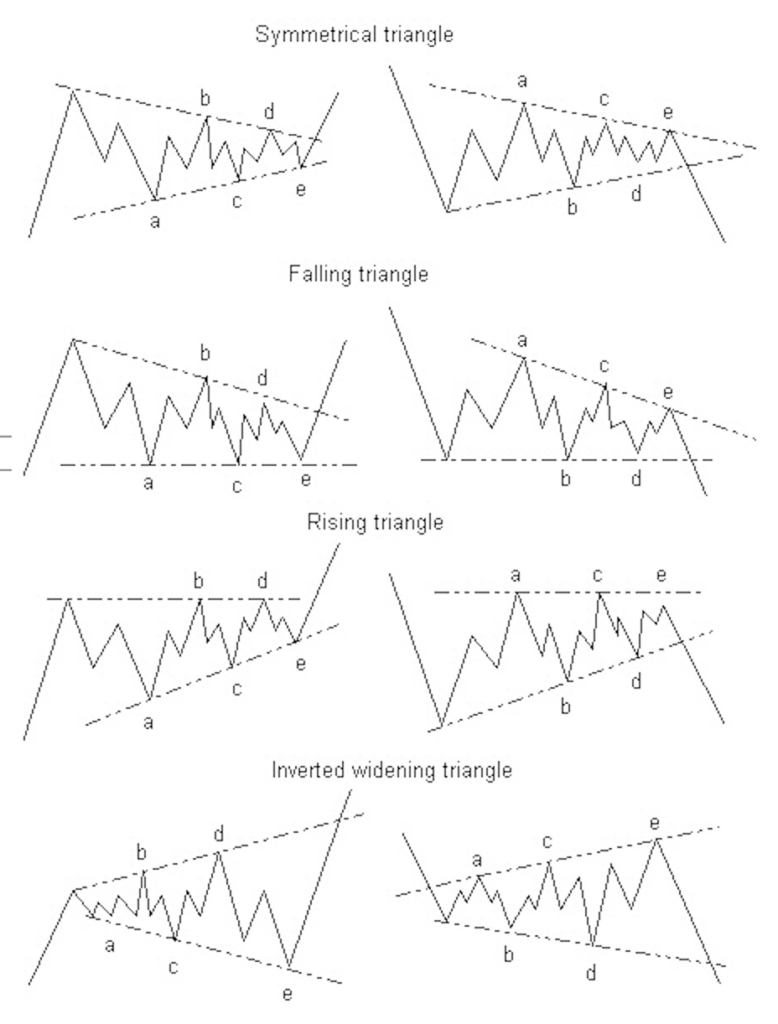Understanding Elliott Wave Triangle Formations: A Beginner’s Guide
If you’re learning about Elliott Wave Theory, you’ll eventually come across Triangle Formations. These patterns are crucial for traders because they signal consolidation before a big market move. In this beginner-friendly guide, we’ll break down what Elliott Wave triangles are, where they form, what to expect, and how to trade them.
What Is an Elliott Wave Triangle Formation?
A triangle formation in Elliott Wave Theory is a corrective pattern that consists of five waves labeled A-B-C-D-E. Unlike impulsive waves, triangles indicate price consolidation and occur when the market is indecisive, often leading to a breakout in the direction of the larger trend.
Triangles form within corrective waves and are characterized by their contracting or expanding structure. They help traders anticipate the next major price movement once consolidation is complete.
Where Do Elliott Wave Triangles Form?
Triangles typically form in specific areas of the Elliott Wave cycle:
Wave 4 of an impulse wave (before Wave 5 starts).
Wave B of an A-B-C corrective pattern.
Final stages of complex corrections (X waves).
Within larger corrections in wave Y or Z (triple and double zigzags).
Since triangles indicate temporary consolidation, traders should expect a breakout once the pattern is complete.
Types of Elliott Wave Triangles
There are five main types of Elliott Wave triangles:
Contracting Triangle (Most Common)
The trend lines converge, forming a tightening wedge.
The market moves in smaller swings until it breaks out.
Expanding Triangle
The trend lines diverge, showing increasing volatility.
Price swings become larger before a breakout occurs.
Ascending Triangle
The upper trendline is flat, while the lower trendline slopes upwards.
Indicates bullish pressure, with a higher chance of an upward breakout.
Descending Triangle
The lower trendline is flat, while the upper trendline slopes downward.
Suggests bearish pressure, likely leading to a downward breakout.
Running Triangle
Similar to a contracting triangle, but Wave B extends beyond the start of Wave A.
Shows strong market sentiment in the direction of the breakout.
What to Expect After a Triangle Formation
Wave 5 Breakout: If a triangle forms in Wave 4, expect a sharp Wave 5 movement in the direction of the previous trend.
Strong Wave C: If the triangle appears in a B wave, expect a powerful Wave C move in the corrective pattern.
Final Wave Move: Since triangles appear before the last leg of a trend, they often indicate a final push before a major reversal or correction.
How to Trade Elliott Wave Triangles
Identify the Triangle Early: Spot the five-wave structure (A-B-C-D-E) and confirm price consolidation within trendlines.
Wait for the Breakout: Enter a trade only after the breakout occurs, avoiding false signals inside the triangle.
Use Volume for Confirmation: A breakout accompanied by increased volume strengthens the trade setup.
Set Stop-Loss Orders: Place stops just outside the triangle’s boundaries to minimize risk.
Target the Next Wave Move: Measure the triangle’s widest part and project that distance from the breakout point to estimate a price target.
Conclusion
Elliott Wave triangles are essential for understanding market consolidations and predicting breakouts. By recognizing their structure and positioning within wave cycles, traders can anticipate major price movements and trade with more confidence. As you continue learning Elliott Wave Theory, practice identifying triangle patterns on historical charts and apply these trading strategies to improve your market analysis.
Happy trading

